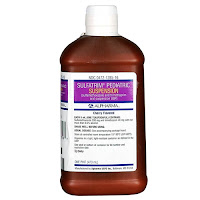The
modern uses and common diseases of the horses predispose them to conditions of
pain and inflammation. Pain is the basic response to injured body tissues.
Inflammation is the primary cellular response to an insult or injury from
bacteria or other infectious organisms, or chemical and physical agents.
Inflammation is a natural defense mechanism against tissue injury and usually
leads to successful tissue healing. There are several categories of drugs that
control pain and inflammation in horses. The demands of pleasure and
competitive riding and racing result in many inflammatory conditions of the
muscoskeletal system. The nature of the work that horses perform causes pain
and strains. In some cases, this can cause even more serious injuries which
lead to temporary or permanent disability.
Allivet carries several different medications that treat the pain and inflammation associated with injuries and
arthritis. We carry products such as Bute Paste and Banamine Paste which have an analgesic (pain relieving), anti-inflammatory and antipyretic (fever reducing) activity from inhibition of cyclooxygenase.
arthritis. We carry products such as Bute Paste and Banamine Paste which have an analgesic (pain relieving), anti-inflammatory and antipyretic (fever reducing) activity from inhibition of cyclooxygenase.
We also carry Ketoprofen which comes in the form of an injectable (starting at $115.99 for a 50ml vial). Is is an NSAID which assists with the inflammation and pain. Our most popular product that we carry today is the Adequan I.M. (starting at $199.99) which has proven to be extremely effective on horse inflammation and pain. Adequan is “polysulfated glycosaminoglycan” which in short is known as PSGAG. The PSGAG binds to the cartilage components and many studies have shown this drug to be beneficial on damaged joints. It is thought to decrease enzymes, act as an anti-inflammatory agent and stimulate the normal production of hyaluronan and glycosaminoglycan which eases pain and supports joint movement and function. Save big on horse anti inflammatory medications. 100% product and money back guarantee.









